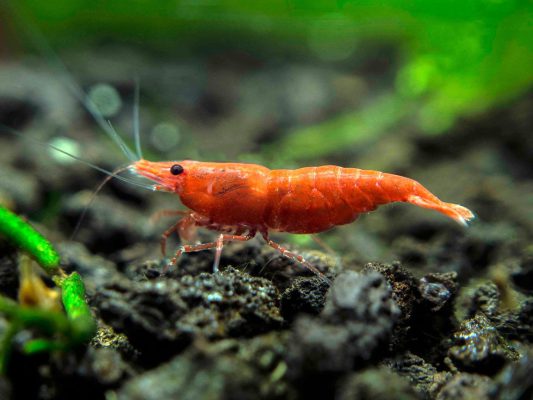Litopenaeus Vannamei Shrimp’s food guide, special for farming in high saltwater:
This food is balanced in terms of nutrition science and they are designed for Minimum FCR and Maximum Growth.
The aim is reaching to the better growth and minimum FCR through the feeding management.
|
NR |
Starter 1 |
Starter 2 |
Starter 3 |
Growth 1 |
Growth 2 |
Final |
|
Shrimp size |
1-PL12 |
2-1 |
5-2 |
8-5 |
20-8 |
>20 |
|
Type |
Crumble |
Crumble |
Pellet |
Pellet |
Pellet |
Pellet |
|
Shrimp Diameter mm. |
1-0.5 |
1.5-1 |
1.2 |
1.5 |
2 |
2.5 |
|
Food length mm. |
2 |
3 |
4 |
4 |
||
|
Compounds |
||||||
|
Maximum humidity |
12 |
12 |
12 |
12 |
12 |
12 |
|
Protein |
43-45 |
42-44 |
41-43 |
40-42 |
38-40 |
37-38 |
|
Fat |
8-10 |
8-10 |
8-10 |
7-9 |
7-9 |
9 |
|
Fiber |
2-3.5 |
2-3.5 |
2-3.5 |
2-3.5 |
2-3.5 |
2-3.5 |
|
cinder |
12-14 |
12-14 |
11-13 |
12-14 |
12-14 |
12-14 |
For meeting the best results, the correct management of nutrition and proper environment conditions are required. If the shrimp lives in an improper conditions, only FCR increased and the quality of water and rate of growth decreased.
This feeding table is only used as the guide and in order to optimizing the feeding
|
Average weight gr |
Type of food |
Daily feeding % |
Feeding time (in a day) |
Expected growth (gr/week) |
|
PL12 (the 1st week) |
Starter 1 |
25-10 |
2 |
|
|
0.2-1 |
Starter 1 |
10-5 |
2 |
|
|
1-2 |
Starter2 |
4.9-4.7 |
4 |
|
|
2-3.5 |
Starter 3 |
4.6-4.5 |
4 |
1 |
|
3.5-5 |
Starter 3 |
4.4-4.2 |
4 |
1.25 |
|
5-6 |
Growth 1 |
4.3-4.2 |
6 |
1.4< |
|
6-8 |
Growth 1 |
4-3.8 |
6 |
1.4< |
|
8-10 |
Growth 2 |
3.8-3.6 |
6 |
1.4< |
|
10-12 |
Growth 2 |
3.5-3.4 |
6 |
1.4< |
|
12-13 |
Growth 2 |
3.2-3 |
6 |
1.4< |
|
13-15 |
Growth 2 |
2.8-2.6 |
6 |
1.4< |
|
15-17 |
Growth 2 |
2.6-2.4 |
6 |
1.4< |
|
17-20 |
Growth 2 |
2.4-2 |
6 |
1.4< |
|
20-22 |
Final |
1.8-1.4 |
6 |
1.2< |
|
22-24 |
Final |
1.4-1.2 |
6 |
1< |
|
<24 |
final |
1.2-0.1 |
6 |
1< |
Special conditions of the farm can effect on the amount of feeding
Here there are indices for adjustment of the amount of feeding:
Shrimp molting at the same time:
All shrimp molt at the same time. The amount of feeding must decrease up to 50% during molting.
Oxygen problems: If Oxygen is low in the morning (less than 4 ppm), feeding at night and in the evening must be cancelled. The amount of feeding at any meal must be the same as before, then, the amount of feeding would decreased properly.
Feeding Trays: Food trays must be controlled after 30 minutes, if total food is not eaten, the amount of food at the next day must decrease up to 10%. If for two subsequent days, all food trays are empty completely, after 30 minutes, the amount of feeding maybe increase up to 10%.
If the observed growth is less than the expected amount, the amount of feeding must decrease properly. For example, a shrimp weighted 10 grams that only grows 1.2 gram, must be fed only up to 3.17% instead of 3.7%.
(3.7 × 1.2) ÷ 1.4, always use the average dated to two weeks before molting.
If temperature is above 34 centigrade, the meal of 13:00 or 15:00 PM must be omitted.
If temperature is more than 26 centigrade, for each centigrade below 26, decrease the feedingabout 20%. For example, if temperature is 24 centigrade, the amount of feeding must be 4%, only feed 2.4 (60%*4%).

Feeding Time:
Two times a day:
50% of food at 7:00 am and 50% of food at 16:00 pm
Four times a day:
30% of food at 7:00 am , 20% of food at 13:00 pm , 30% of food at 19:00 pm, 20% of food at 1:00 am.
Six Times a day:
20% of food at 7:00 am, 15% of food at 11:00 am, 15% of food at 15:00 pm ,20% of food at 19:00 pm, 15% of food at 23:00 pm and 15% of food at 3:00 am
If a meal is omitted due to low water soluble oxygen or high temperature of water, the amount of feeding at next meals must not increase. Then, total amount of feeding would decrease.
Calculating the Biomass of the pools:
Mashak fishing net is used for catching the shrimp in different parts of the pool. Estimate the surface of the net and number the shrimp then, multiply in total area of the pool. For obtaining number of shrimps, compare the obtained number with the number of post-storage larvae.
weight the shrimps then, obtain the average weight of the shrimps.
|
week |
Average weight gr |
Number of shrimp |
Water soluble oxygen at 5:00 am |
NH3 ppm |
PH at 17:00 pm |
Salt ppt |
Temperature at 14:00 pm |
Total weekly feeding kg |
Estimated biomass kg |
Weekly FCR |
Remarks |
|
0 |
|||||||||||
|
1 |
|||||||||||
|
2 |
|||||||||||
|
3 |
|||||||||||
|
4 |
|||||||||||
|
5 |
The pervious table is the sample of type of registration and control of the amount of feeding. Estimating the biomass weekly and comparing it with the last week, it can be to obtain theoretical FCR of the last week.
Estimating Biomass: The average weight × the number of shrimps
Weekly FCR = Weekly total feeding ÷ (Estimated alive Biomass of this week kg – alive biomass of the previous week kg)
If FCR is very high (2< ) or very low (1>), the farmer may set the feeding amount.
As some conditions ( molting or sampling error) may effect on the results obtained within one week , for obtaining the correct results , obtain the average of 2 to 3 last weeks.




